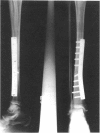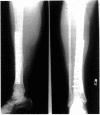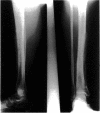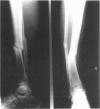Abstract
From 1985 to 1988, 90 closed tibial fractures were prospectively studied to assess the morbidity of such injuries to sports people and how this can be influenced by treatment regimens. All fractures were sustained during rugby or football matches. After random selection, 45 fractures were openly reduced and internally fixed (group A), and 45 fractures were manipulated under general anaesthesia and a long-leg plaster applied (group B). For patients in group A, below-knee plasters were used for 3 to 4 weeks, with immediate weight-bearing when tolerated. A total of 44 (98%) tibiae united clinically and radiologically within 14-18 weeks. Within 4 months of surgery 28 (62%) patients had returned to work and were able to play again by the following season. By 6 months 17 (38%) patients had resumed normal activities. In group B, only 24 (53%) tibiae united in a mean time of 16 weeks (range 12-40 weeks). Six (13%) patients required bone grafting for non-union, and one patient subsequently developed osteomyelitis. Only ten (22%) patients were back to work and playing sport again within 6 months of initial injury. It is concluded that internal fixation of closed tibial fractures as a primary procedure following low velocity sports injuries can be safely performed. It leads to a faster return to normal activities with fewer complications than does conservative treatment in plaster using contemporary methods.
Full text
PDF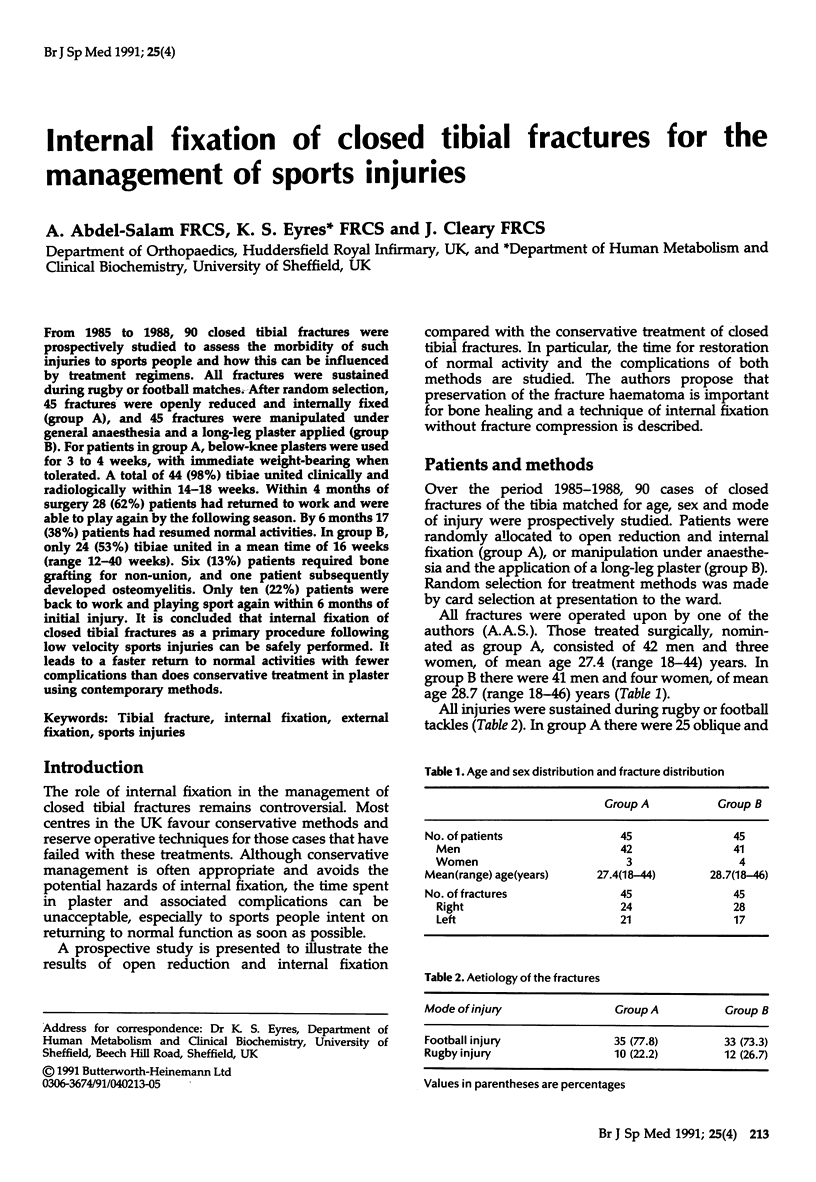
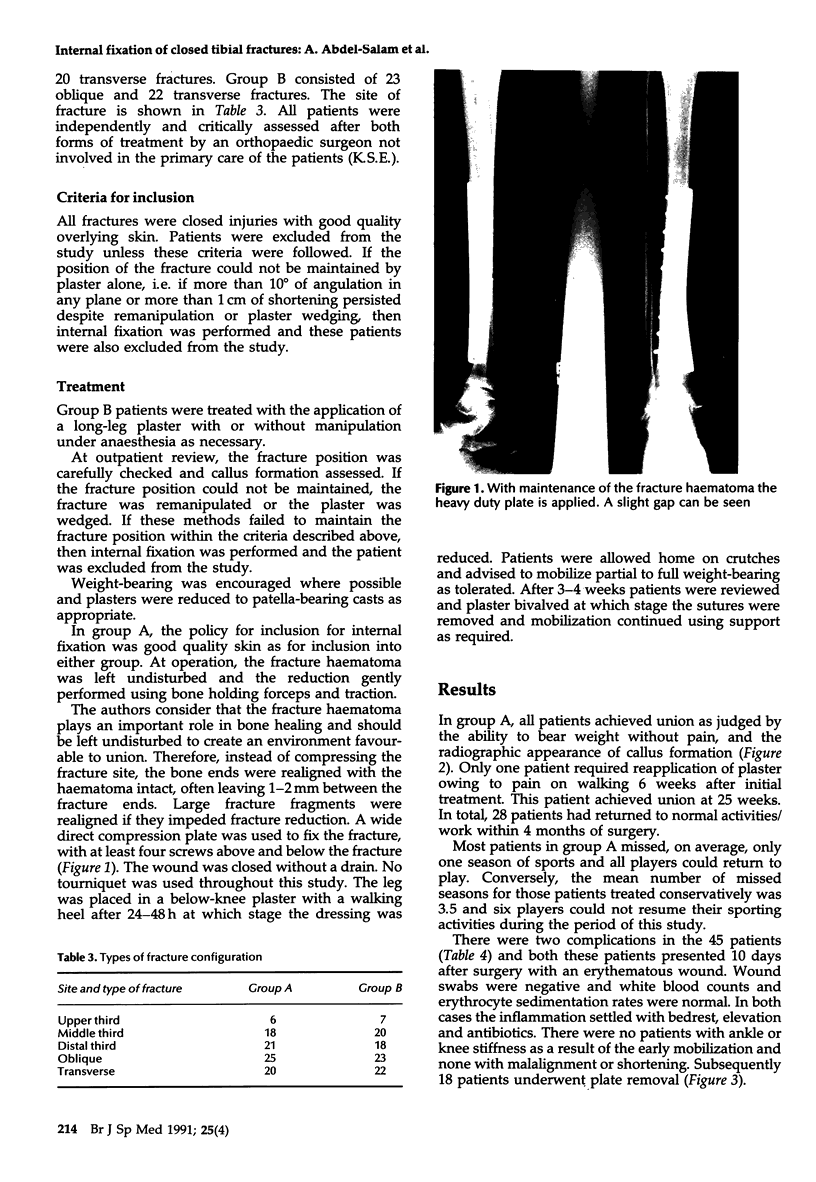
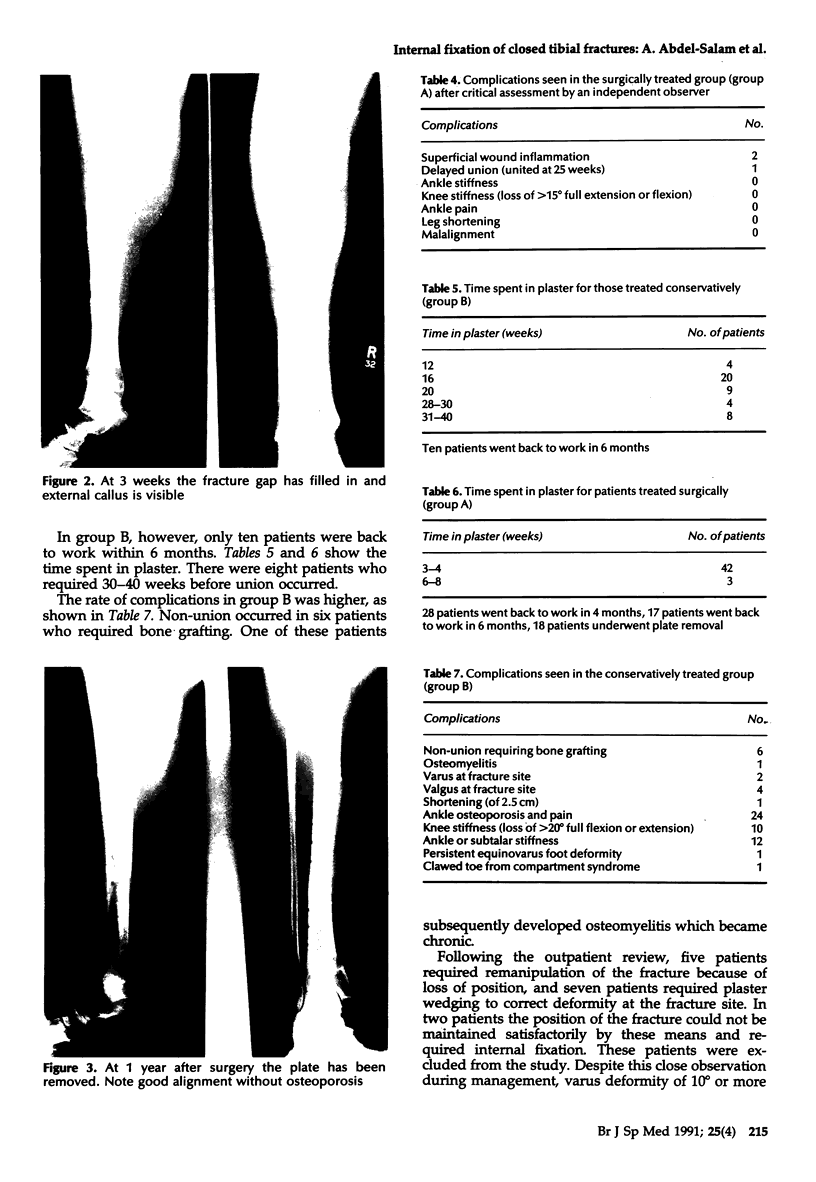
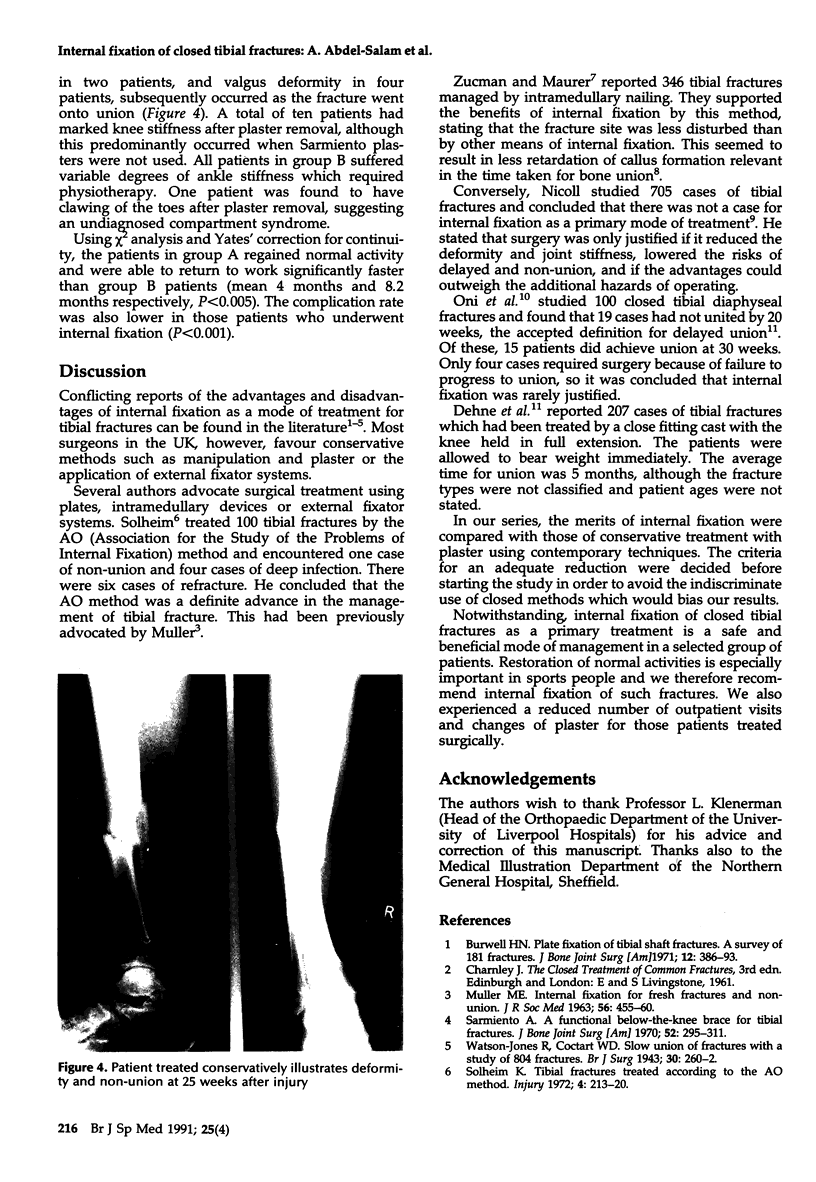
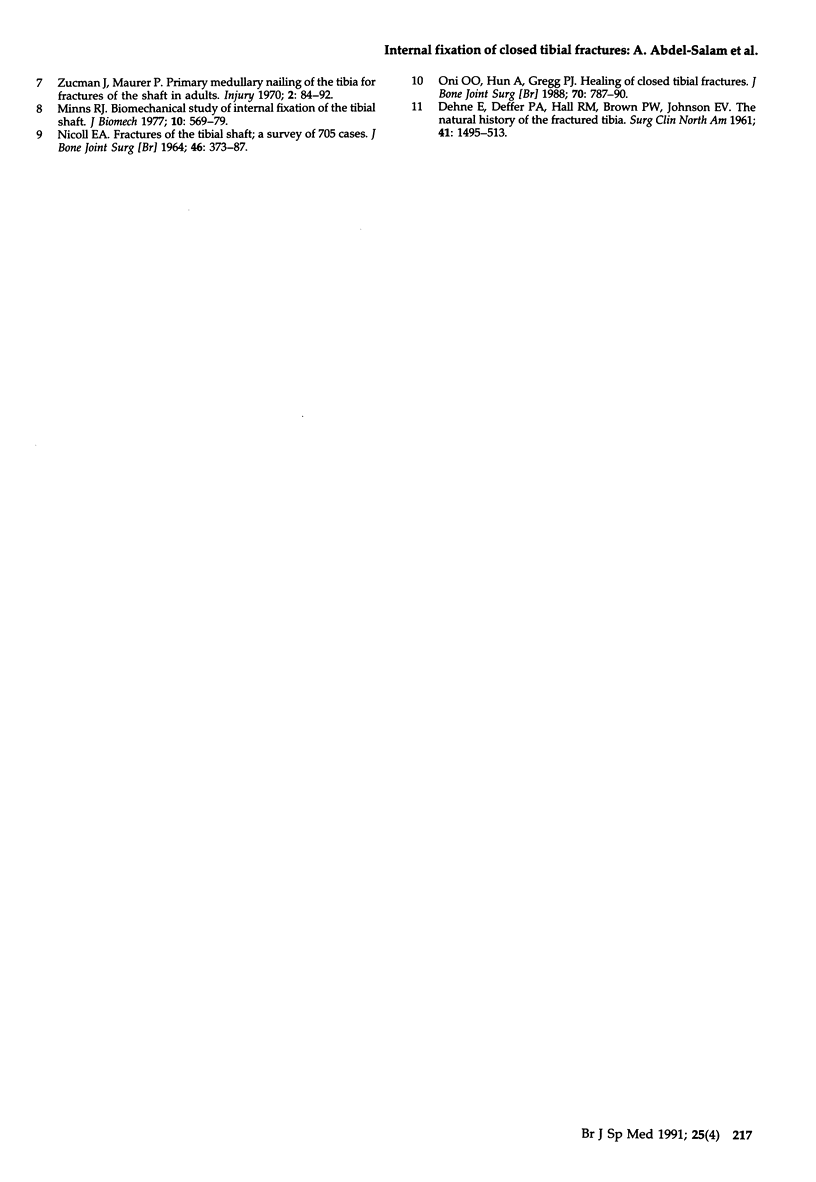
Images in this article
Selected References
These references are in PubMed. This may not be the complete list of references from this article.
- DEHNE E., DEFFER P. A., HALL R. M., BROWN P. W., JOHNSON E. V. The natural history of the fractured tibia. Surg Clin North Am. 1961 Dec;41:1495–1513. doi: 10.1016/s0039-6109(16)36535-5. [DOI] [PubMed] [Google Scholar]
- MULLER M. E. Internal fixation for fresh fractures and for non-union. Proc R Soc Med. 1963 Jun;56:455–460. [PMC free article] [PubMed] [Google Scholar]
- Minns R. J., Bremble G. R., Campbell J. A biomechanical study of internal fixation of the tibal shaft. J Biomech. 1977;10(9):569–579. doi: 10.1016/0021-9290(77)90037-9. [DOI] [PubMed] [Google Scholar]
- NICOLL E. A. FRACTURES OF THE TIBIAL SHAFT. A SURVEY OF 705 CASES. J Bone Joint Surg Br. 1964 Aug;46:373–387. [PubMed] [Google Scholar]
- Oni O. O., Hui A., Gregg P. J. The healing of closed tibial shaft fractures. The natural history of union with closed treatment. J Bone Joint Surg Br. 1988 Nov;70(5):787–790. doi: 10.1302/0301-620X.70B5.3192581. [DOI] [PubMed] [Google Scholar]
- Sarmiento A. A functional below-the-knee brace for tibial fractures. A report on its use in one hundred thirty-five cases. J Bone Joint Surg Am. 1970 Mar;52(2):295–311. [PubMed] [Google Scholar]
- Zucman J., Maurer P. Primary medullary nailing of the tibia for fractures of the shaft in adults. Injury. 1970 Oct;2(2):80–92. doi: 10.1016/s0020-1383(70)80002-x. [DOI] [PubMed] [Google Scholar]



